Fayetteville, North Carolina, Hgh State Clinic, Hgh Injections, Hrt Doctors
Fayetteville, North Carolina Blood Testing Facilities
 Represents a LabCorp blood testing facility
Represents a LabCorp blood testing facility Represents a Quest Diagnostics blood testing facility
Represents a Quest Diagnostics blood testing facility
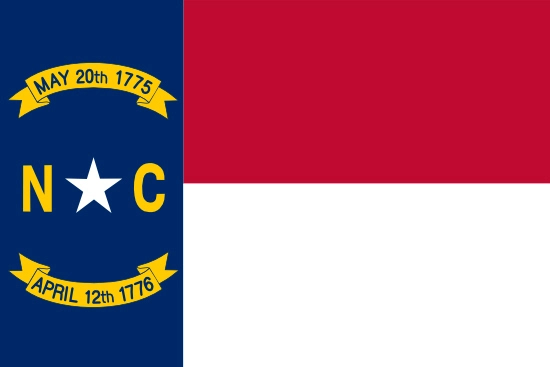
Nearby Labcorp Blood Testing facilities:
- Labcorp Center Distance: 2 m, 2149 Valleygate Dr Suite 101, Fayetteville, Cumberland County, NC, 28304
- Labcorp Center Distance: 3 m, 105 Roxie Ave, Fayetteville, Cumberland County, NC, 28304
- Labcorp Center Distance: 24 m, 100 South 10Th Street, Lillington, Harnett County, NC, 27546
- Labcorp Center Distance: 33 m, 1133 Carthage Street Unit De, Sanford, Lee County, NC, 27330
- Labcorp Center Distance: 34 m, 8 Regional Circle, Pinehurst, Moore County, NC, 28374
- Labcorp Center Distance: 41 m, 104 Bass Lake Road Suite 100, Holly Springs, Wake County, NC, 27540
- Labcorp Center Distance: 42 m, 328 N Brightleaf Blvd, Smithfield, Johnston County, NC, 27577
- Labcorp Center Distance: 44 m, 95 Springbrook Ave. Ste. 107, Clayton, Johnston County, NC, 27520
- Labcorp Center Distance: 47 m, 222 Ashville Ave Suite 10, Cary, Wake County, NC, 27518
- Labcorp Center Distance: 51 m, 301 E Jackson St, Dillon, Dillon County, SC, 29536
- Labcorp Center Distance: 52 m, 3601 Davis Drive, Morrisville, Wake County, NC, 27560
- Labcorp Center Distance: 53 m, 3200 Blue Ridge Road Ste 200, Raleigh, Wake County, NC, 27607
- Labcorp Center Distance: 55 m, 4009 Barrett Dr Ste 104, Raleigh, Wake County, NC, 27609
- Labcorp Center Distance: 56 m, 2400 Wayne Memorial Dr. Ste E, Goldsboro, Wayne County, NC, 27534
- Labcorp Center Distance: 58 m, 6729 Falls Of Neuse Rd Ste 102, Raleigh, Wake County, NC, 27615
- Labcorp Center Distance: 59 m, 8300 Health Park Suite 223, Raleigh, Wake County, NC, 27615
- Labcorp Center Distance: 60 m, 11001 Durant Road Ste 106, Raleigh, Wake County, NC, 27614
- Labcorp Center Distance: 62 m, 5324 Mcfarland Drive Ste 100, Durham, Durham County, NC, 27707
- Labcorp Center Distance: 63 m, 100 Timberhill Place Suite 122, Chapel Hill, Orange County, NC, 27514
- Labcorp Center Distance: 64 m, 10831 Forest Pines Dr Ste 108, Raleigh, Wake County, NC, 27614
- Labcorp Center Distance: 68 m, 4111 Ben Franklin Blvd, Durham, Durham County, NC, 27704
- Labcorp Center Distance: 69 m, 2402 Camden Street Ste 600, Wilson, Wilson County, NC, 27893
- Labcorp Center Distance: 72 m, 3302 Nash Street North, Wilson, Wilson County, NC, 27893
- Labcorp Center Distance: 73 m, 3940 Arrowhead Blvd Ste 240, Mebane, Alamance County, NC, 27302
- Labcorp Center Distance: 74 m, 2111B N Queen St, Kinston, Lenoir County, NC, 28501
- Labcorp Center Distance: 77 m, 1508A N Cashua Dr, Florence, Florence County, SC, 29501
- Labcorp Center Distance: 79 m, 711 Saluda Dr, Florence, Florence County, SC, 29501
- Labcorp Center Distance: 80 m, 2505 Delaney Rd, Wilmington, New Hanover County, NC, 28403
- Labcorp Center Distance: 87 m, 7 Office Park Drive Suite 2, Jacksonville, Onslow County, NC, 28546
- Labcorp Center Distance: 88 m, 812 Farrar Dr Ste A, Conway, Horry County, SC, 29526
- Labcorp Center Distance: 89 m, 1021 Cipriana Drive Ste 260, Myrtle Beach, Horry County, SC, 29572
- Labcorp Center Distance: 90 m, 137 Mt. Calvary Road Suite B, Thomasville, Davidson County, NC, 27360
- Labcorp Center Distance: 91 m, 2210 Hemby Lane Suite 101, Greenville, Pitt County, NC, 27834
- Labcorp Center Distance: 99 m, 601 Mocksville Ave Ste B, Salisbury, Rowan County, NC, 28144
Nearby Quest Blood Testing facilities:
- Quest Center Distance: 3 m, 1840 Owen Dr, Fayetteville, Cumberland County, NC, 28304-3455
- Quest Center Distance: 31 m, 3333 Nc Highway 242 N, Benson, Johnston County, NC, 27504-7844
- Quest Center Distance: 37 m, 1014 Procure St., Fuquay Varina, Wake County, NC, 27526-2620
- Quest Center Distance: 47 m, 530 New Waverly Pl, Cary, Wake County, NC, 27518-7414
- Quest Center Distance: 48 m, 103 Baines Court, Cary, Wake County, NC, 27511-6646
- Quest Center Distance: 53 m, 3031 New Bern Ave, Raleigh, Wake County, NC, 27610-2989
- Quest Center Distance: 56 m, 2400 Wayne Memorial Dr, Goldsboro, Wayne County, NC, 27534-1750
- Quest Center Distance: 69 m, 2605 Forest Hills Rd, Wilson, Wilson County, NC, 27893-4448
- Quest Center Distance: 79 m, 2032 S 17Th St, Wilmington, New Hanover County, NC, 28401-6678
- Quest Center Distance: 87 m, 200 Doctors Dr, Jacksonville, Onslow County, NC, 28546-6308
- Quest Center Distance: 89 m, 909 Medical Cir, Myrtle Beach, Horry County, SC, 29572-4116
- Quest Center Distance: 90 m, 2070 West Arlington Blvd, Greenville, Pitt County, NC, 27834-3769
- Quest Center Distance: 91 m, 381 Ruin Creek Rd, Henderson, Vance County, NC, 27536-2932
- Quest Center Distance: 99 m, 611 Mocksville Ave, Salisbury, Rowan County, NC, 28144-2738
Fayetteville North Carolina Hormone Replacement Therapy Services
Welcome to the Conscious Evolution Institute. We are a premier Hormone Clinic which is proud to serve the people of Fayetteville, as well as all residents of the state of North Carolina. Our speciality is providing fast, effective, accurate, and affordable Hormone Deficiency Diagnosis and Hormone Treatment to men and women 30 and older.
If you qualify for HGH Injections, Testosterone Therapy, or any of the other treatment programs we offer at our HRT Clinic, our Hormone Specialists can prescribe you with high quality Hormone Therapy products such as Norditropin, Humatrope, Testosterone Enanthate, and Testosterone Cypionate. We have affiliates all across both North Carolina and the entire United States, meaning that we have the logistical superiority to provide you with the best Hormone Balance and Restoration Treatments available in America today.
If you think that Hormone Deficiency may be bringing you down or negatively impacting your wellness and way of life, we encourage you to give us a call today to learn more about what our Hormone Doctors can do for you!
Fayetteville North Carolina Testosterone Restoration Treatments for Low-T
Low-T can be embarrassing to talk about, but don't let that get in the way of reaching out for Testosterone Treatments that can absolutely change your life. If you have noticed a sharp decline in your bedroom proficiency, combined with a general loss of sex drive and libido, these are the most prominent signs of Andropause. Andropause is the male analogue of Menopause, and can be just as devastating, or even moreso, to your overall physiological wellness and health.
The sexual symptoms of Low-T are the most recognizable issues, but they are truly only the tip of the iceberg when it comes to Testosterone Deficiency. Other symptoms of Hypogonadism include depression, anxiety, increased BMI, fatigue, weaker muscles, and more. Our Testosterone Doctors and Specialists can prescribe you with Bio-Identical Testosterone Injections, as well as other treatments such as Transdermal Creams and Patches in order to restore Testosterone Balance and get your health and your life back on the road to virility.
Fayetteville North Carolina Human Growth Hormone Clinic for Hypopituitarism Treatment
Because of its use for Performance Enhancement and other illicit purposes, HGH Injections truly get a bad rap that they don't deserve. Human Growth Hormone deficiency is a real medical malady which severely impacts the form and function of the human body, and all of this bad press only convinces men and women that could truly benefit from the treatment to avoid seeking it out.
The Conscious Evolution Institute specializes in the diagnosis and treatment of Hypopituitarism and HGH Imbalance, and can help you establish your potential clinical need for Growth Hormone Shot Therapy. With a simple physical and blood test, our HGH Doctors have all of the medical data at their disposal to provide an accurate diagnosis and provide a treatment that fits your needs as a patient. If you've felt your body slowing down, combined with changes in your sleeping habits, weight gain, issues with healing, or increased incidence of illness, we encourage you to fill out the form on this page and arrange for an appointment with our HRT Affiliate.
Fayetteville North Carolina Sermorelin Acetate HGH Deficiency Therapy
There is another option for patients with Hypopituitarism that is becoming more popular every year, and that option is Sermorelin Injections. Sermorelin is the clinical derivative of a naturally produced hormone called GH-RH, which is released by the Hypothalamus and encourages optimal production of Human Growth Hormone by the Somatotrophs of the Pituitary Gland. Because Sermorelin is an HGH Precursor, just like GH-RH, increased Growth Hormone Levels are the direct result of increased Pituitary activity, rather than of exogenous HGH delivered subcutaneously.
If you are interested in learning more about the differences between Sermorelin and Human Growth Hormone and how they pertain to your potential treatment, our friendly and knowedgeable Hormone Specialists can explain your options to you in detail.
Fayetteville North Carolina Information
Fayetteville is a major city in central North Carolina. Fort Bragg is a United States Army Base located in the city, and is also the largest employer in the region. In addition to Fort Bragg, Fayetteville is also home to Pope Army Air Force Base. The city represents the 5th most populous metropolitan area in the state. Suburbs of the city include Eastover, Stedman, Rockfish, Pope Field, Raeford, Spring Lake, and Hope Mills. Fayetteville was officially founded in 1783, and was the result of the unification of two earlier settlements, Campbellton and Cross Creek. There are two universities based in Fayetteville: Methodist University and Fayetteville State University. Neighborhoods in Fayetteville include Haymount, Arran Lakes, Stoney Point, and Lafayetteville Village.
Fayetteville North Carolina Economy
Obviously, the Fort is the primary source of employment and revenue in Fayetteville, but there are several other major players in the city's economy. Health and Education are major market segments, and the Cape Fear Valley Health System is the largest healthcare provider. The city and county government also offer thousands of jobs. The largest manufacturing employer in the city is Goodyear Tire, and the largest consumer goods retailer is Wal-Mart.
Though these are the largest employers, the area is also a hotbed for defense contractors. Major contractors have operations in the Fayetteville area, such as L-3 Communications, General Dynamics, Boeing, and Lockheed Martin.
Things to See and Do in Fayetteville North Carolina
Arenas and entertainment venues in Fayetteville include the Gilbert Theater, the Cumberland County Crown Coliseum, the Cape Fear Regional Theater, and the Cameo Art House Theater. There are also a number of historical and military museums in the city, such as the Museum of the Cape Fear Historical Complex and the Airborne and Special Operations Museum, in addition to the Fayetteville Museum of Art.
Furthermore, there are many historical and culturally important places in Fayetteville which are popular with tourists, like St. Patrick Catholic Church, Myrtle Hill Plantation, Heritage Square, and Bordeaux Tower. There are lots of fun cultural events in Fayetteville, like the Art Council's International Folk Festival, held every September. Fourth Friday is also a big deal in the city. Once every month artists, vendors, and musicians set up shop outside and at venues all throughout downtown Fayetteville to inspire, entertain, sell goods, and bolster civic pride.
All About Fayetteville, North Carolina Geographic Area
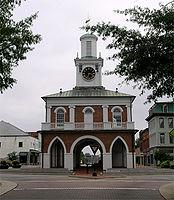
Fayetteville is a city in Cumberland County, North Carolina, United States. It is the county seat of Cumberland County, and is best known as the home of Fort Bragg, a major U.S. Army installation northwest of the city.
Fayetteville has received the prestigious All-America City Award from the National Civic League three times, more than any other city. According to the 2011 United States Census estimate, the city has a population of 205,678. It currently ranks as the sixth-largest municipality in North Carolina. Fayetteville is in the Sandhills in the western part of the Coastal Plain region, on the Cape Fear River.
With an estimated population of 374,157, the Fayetteville metropolitan area is the largest in southeastern North Carolina, and the fifth-largest in the state. Suburban areas of metro Fayetteville include Fort Bragg, Hope Mills, Spring Lake, Raeford, Pope Army Airfield, Rockfish, Stedman, and Eastover. Fayetteville's current mayor is Tony Chavonne, who is serving his fourth term.
The area of present-day Fayetteville was historically inhabited by various Siouan Native American peoples, such as the Eno, Shakori, Waccamaw, Keyauwee, and Cape Fear Indians. They followed successive cultures of other indigenous peoples in the area for more than 12,000 years.
After the violent upheavals of the Yamasee War and Tuscarora Wars during the second decade of the 18th century, the North Carolina colony encouraged English settlement along the upper Cape Fear River, the only navigable waterway entirely within the state. Two inland settlements, Cross Creek and Campbellton, were established by Scots from Campbellton, Argyll and Bute, Scotland.
Merchants in Wilmington wanted a town on the Cape Fear River to secure trade with the frontier country. They were afraid people would use the Pee Dee River and transport their goods to Charleston, South Carolina. The merchants bought land from Newberry in Cross Creek. Campbellton became a place where poor whites and free blacks lived, and gained a reputation for lawlessness.
After the American Revolutionary War, the two towns were united and renamed to honor General La Fayette, a French military hero who significantly aided the American Army during the war. Fayetteville was the first city to be named in his honor in the United States. Lafayette visited the city in 1825 during his grand tour of the United States.
The Highland Scots, recent immigrants, tended to be loyal to the British government. But the area also included a number of active Patriots.
In late June 1775, residents drew up the "Liberty Point Resolves," which preceded the Declaration of Independence by a little more than a year. It said,
"This obligation to continue in full force until a reconciliation shall take place between Great Britain and America, upon constitutional principles, an event we most ardently desire; and we will hold all those persons inimical to the liberty of the colonies, who shall refuse to subscribe to this Association; and we will in all things follow the advice of our General Committee respecting the purposes aforesaid, the preservation of peace and good order, and the safety of individual and private property."
Robert Rowan, who apparently organized the group, signed first.
Robert Rowan (circa 1738 ae1798) was one of the area's leading public figures of the 18th century. A merchant and entrepreneur, he settled in Cross Creek in the 1760s. He served as an officer in the French and Indian War, as sheriff, justice and legislator, and as a leader of the Patriot cause in the Revolutionary War. Rowan Street and Rowan Park in Fayetteville and a local chapter of the Daughters of the American Revolution are named for him, though Rowan County (founded in 1753) was named for his uncle, Matthew Rowan.
Flora MacDonald (1722 ae1790), a Scots Highland woman known for aiding Bonnie Prince Charlie after his Highlander army's defeat at Culloden in 1746, lived in North Carolina for about five years.
Seventy-First Township in western Cumberland County (now a part of Fayetteville) is named for a British unit during the American Revolution ae the 71st Regiment of Foot or 'Fraser's Highlanders,' as they were first called.
Fayetteville had what is sometimes called its "golden decade" during the 1780s. It was the site in 1789 for the state convention that ratified the U.S. Constitution and the General Assembly session that chartered the University of North Carolina at Chapel Hill, America's oldest public university. Fayetteville lost out to the future city of Raleigh in the bid to become the permanent state capital.
In 1793, the Fayetteville Independent Light Infantry formed and is still active as a ceremonial unit. It is the second-oldest militia unit in the country.
Henry Evans (circa 1760 ae1810), a free black preacher, is locally known as the "Father of Methodism" in the area. Evans was a shoemaker by trade and a licensed Methodist preacher. He met opposition from whites when he began preaching to slaves in Fayetteville, but he later attracted whites to his services. He is credited with building the first church in town, called the African Meeting House, in 1796. Evans Metropolitan AME Zion Church is named in his honor.
Fayetteville had 3,500 residents in 1820, but Cumberland County's population still ranked as the second-most urban in the state behind New Hanover County (Wilmington). Its "Great Fire" of 1831 was believed to be one of the worst in the nation's history, although no lives were lost. Hundreds of homes and businesses and most of the best-known public buildings were lost, including the old "State House." Fayetteville leaders moved quickly to help the victims and rebuild the town.
The Market House, completed in 1832, became the center of commerce and celebration. The structure was built on the ruins of the old State House. It was a town market until 1906. It served as Fayetteville Town Hall until 1907. The City Council is considering adapting the Market House into a local history museum.
In March 1865, Gen. William T. Sherman and his 60,000-man army attacked Fayetteville and destroyed the Confederate arsenal. Sherman's troops also destroyed foundries and cotton factories, and the offices of The Fayetteville Observer. Not far from Fayetteville, Confederate and Union troops engaged in the last cavalry battle of the Civil War, the Battle of Monroe's Crossroads.
Downtown Fayetteville was the site of a skirmish, as Confederate Lt. Gen. Wade Hampton and his men surprised a cavalry patrol, killing 11 Union soldiers and capturing a dozen on March 11, 1865.
In the late nineteenth century, Fayetteville whites adopted Jim Crow and state laws to impose racial segregation. Despite their constitutional rights, blacks were disfranchised under a new state constitution, a condition that persisted for more than sixty years, until federal civil rights legislation of the mid-1960s.
Cumberland County's population exploded in the post-World War II years, with its 43% increase in the 1960s the largest in any of North Carolina's 100 counties. Construction was fast-paced as shopping developments and suburban subdivisions began to spread outside the Fayetteville city limits toward Fort Bragg and Pope Air Force Base. The Fayetteville and Cumberland County school systems moved toward integration gradually, beginning in the early 1960s; busing brought about wider-scale student integration in the 1970s.
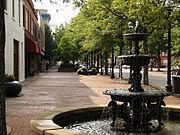
Segregation of public facilities continued. Civil rights marches and sit-ins, with students from Fayetteville State Teachers College (now Fayetteville State University) at the forefront, led to the end of whites-only service at restaurants and segregated seating in theaters. Politics changed. Blacks and women gained office in significant numbers, from the late 1960s and on into the early '80s.
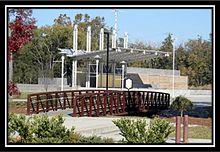
The Vietnam Era was a time of change in the Fayetteville area. Fort Bragg did not send many large units to Vietnam, but from 1966 to 1970, more than 200,000 soldiers trained at the post before leaving for the war. This buildup stimulated area businesses. Anti-war protests in Fayetteville drew national attention because of Fort Bragg, in a city that generally supported the war. Anti-war groups invited the actress and activist Jane Fonda to Fayetteville to participate in three anti-war events. At this time, Fayetteville made headlines after Army doctor Jeffrey R. MacDonald murdered his pregnant wife and two daughters in their Ft. Bragg home in 1970; the book and movie Fatal Vision were based on these events.
To combat the dispersal of suburbanization, Fayetteville has worked to redevelop its downtown through various revitalization projects; it has attracted large commercial and defense companies such as Purolator, General Dynamics and Wal-Mart Stores and Distribution Center. Development of the Airborne & Special Operations Museum, Fayetteville Area Transportation Museum, Fayetteville Linear Park, and Fayetteville Festival Park, which opened in late 2006, have added regional attractions to the center.
In the first decade of the twenty-first century, the towns and rural areas surrounding Fayetteville had rapid growth. Suburbs such as Hope Mills, Raeford and Spring Lake had increases in population.

In 2005, Congress passed the Base Realignment and Closure (BRAC) Act, resulting in several new commands relocating to Fort Bragg. These include the U.S. Army Forces Command and U.S. Army Reserve Command, both of which relocated from Fort McPherson in Atlanta. More than 30,000 people are expected to relocate to the area with associated businesses and families. FORSCOM awards over $300 billion in contracts annually.
Recently, Where To Retire magazine named Fayetteville as one of the best places to retire in the US.
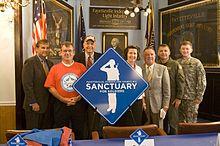
On September 5, 2008, Cumberland County announced it was the auWorld aos First Sanctuary for Soldiers and Their Families; au it marked major roads with blue and white auSanctuary au signage. Within the county, soldiers were to be provided with local services, ranging from free childcare to job placement for soldiers ao spouses.
Five hundred volunteers have signed up to watch over military families. They were recruited to offer one-to-one services; member businesses will also offer discounts and preferential treatments. Time Magazine recognized Fayetteville for its support of military families and identified it as "America's Most Pro-Military Town".
Despite Fayetteville's modest ranking as the 106th largest city in the US, with a population of about 204,000, Fayetteville has earned many top awards and recognition as a desirable location, due to it economic and housing growth as well as its reliance on Fort Bragg.
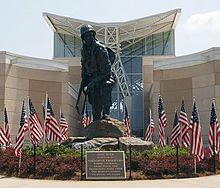
Other honors include:
Fort Bragg and Pope Army Air Field (formerly Pope Air Force Base) are next to the city of Fayetteville. Several U.S. Army airborne units are stationed at Fort Bragg, most prominently the XVIII Airborne Corps HQ, the 82nd Airborne Division, and the United States Army Special Operations Command.
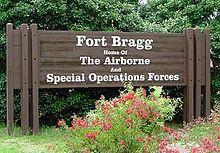
Fort Bragg was the home of the Field Artillery at the onset of World War II. All the Army's artillery units east of the Mississippi River were based at the post, about 5,000 men in all. Soldiers tested the Army's new bantam car, which was soon to be known as the Jeep, although most of the power to move artillery still came from horses and burros. On September 12, 1940, the Army contracted to expand the post, bringing the 9th Infantry Division to Fort Bragg.
Missions at Pope AAF range from providing airlift and close air support to American armed forces, to humanitarian missions flown all over the world. Pope AAF particularly provides air transportation for the 82nd Airborne, among other airborne units on Fort Bragg.
All of Pope AAF's fighter jet squadrons have been relocated to Moody AFB, Georgia. Pope is being turned over to Army control in 2011 and will be called Pope Army Air Field. However, the main entity at Pope at that time will be the Air Force Reserves. The 440th Airlift Wing will handle the majority of Pope Army Airfield's mission. Although they still will have a small amount of active counterpart to get the job done. In January 2011 Pope has officially been turned over to the Army and is conducting operations with the above.
In September 2008, Fayetteville annexed 85% of Ft. Bragg, bringing the official population of the city to 206,000. Ft. Bragg still has its own police, fire, and EMS services. Fayetteville hopes to attract large retail businesses to the area using the new population figures.
Fayetteville is at 35 °04'00" North, 78 °55'03" West (35.066663, -78.917579).
According to the United States Census Bureau, the city has a total area of 60.0 square miles (155 km2), of which 58.8 square miles (152 km2) is land and 1.2 square miles (3.1 km2) is water. The total area is 1.98% water.
Fayetteville is in the Sandhills of North Carolina which are between the coastal plains and Piedmont of North Carolina. The area's sandy soil is evidence of a former coastline that existed approximately 20 million years ago. The city is built on the Cape Fear River, a 202 mile long river that originates in Haywood and empties into the Atlantic Ocean. Carver's Falls, the largest waterfall (measuring at 150 feet wide and 2 stories tall) between the coast and foot hills is also in Fayetteville.
Fayetteville contains a humid subtropical climate with mostly moderate temperatures year round. Winters are cool, but occasionally cold with snow occurring few days per year. Summers are hot and humid with high humidity (which can make temperatures feel very unpleasant) and frequent severe thunderstorms and rain showers. Temperature records range from na1 °F ( na18 °C) on January 21, 1985 to 110 °F (43 °C) on August 21, 1983, which was the highest temperature ever recorded in the State of North Carolina.
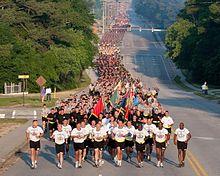
Fort Bragg is the backbone of the county's economy. Fort Bragg and Pope Army Airfield pumps about $4.5 billion a year into the region's economy, making Fayetteville one of the best retail markets in the country. Fayetteville serves as the region's hub for shops, restaurants, services, lodging, health care and entertainment. Fayetteville boasts a low unemployment rate with a large labor pool of trained professionals. Fayetteville also has the 2nd highest per capita income in the state, ahead of Charlotte and Raleigh.
The area's largest employers are:
The Fayetteville area has a large and growing Defense Industry and was ranked in the Top 5 Defense Industry Development areas in US for 2010. Eight of the ten top American defense contractors are located in the area, including Lockheed Martin, Boeing, Northrop Grumman, General Dynamics, and L3 Communications. The city hosts Partnership for Defense Initiatives (PDI), a non-profit organization that works with government, academia, and private industry to develop defense solutions. The PDI sponsors an R and D laboratory and a Defense Security Technology Accelerator (DSTA), a statewide program to assist new companies in developing their products.
Cumberland County Schools' headquarters are located in Fayetteville, and the schools serve all cities and towns of the county. CCS operates a total of 87 schools, 51 elementary schools, 16 middle schools, 10 high schools and 9 Alternative and Specialty Schools including, 1 year-round classical, 1 evening academy, 1 web academy, and 2 special schools. Cumberland County Schools is the 4th-largest school system in the state and 78th-largest in the country.
As of the census of 2010, there were 200,564. people, 48,414 households, and 31,662 families residing in the city. The population density was 2,059.2 people per square mile (795.0/km ²). There were 53,565 housing units at an average density of 351.9 persons/km ² (911.5 persons/sq mi). The racial composition of the city was: 42.74% White, 49.76% Black or African American, 5.67% Hispanic or Latino American, 2.19% Asian American, 1.1% Native American, 0.22% Native Hawaiian or Other Pacific Islander, 2.53% some other race, and 2.78% two or more races.
There were 48,414 households out of which 31.8% had children under the age of 18 living with them, 44.7% were married couples living together, 17.1% had a female householder with no husband present, and 34.6% were non-families. 28.2% of all households were made up of individuals and 7.8% had someone living alone who was 65 years of age or older. The average household size was 2.42 and the average family size was 2.96.
In the city the population was spread out with 25.4% under the age of 18, 12.7% from 18 to 24, 31.2% from 25 to 44, 19.7% from 45 to 64, and 11.0% who were 65 years of age or older. The median age was 32 years. For every 100 females there were 91.9 males. For every 100 females age 18 and over, there were 88.7 males.
The median income for a household in the city was $36,287, and the median income for a family was $41,210. Males had a median income of $30,493 versus $23,477 for females. The per capita income for the city was $19,141. 14.8% of the population and 11.7% of families were below the poverty line. 21.4% of those under the age of 18 and 14.4% of those 65 and older were living below the poverty line.
On September 30, 2005, Fayetteville annexed 27 square miles (70 km2) and 46,000 residents. Some affected residents and developers challenged the annexation in the courts, but were ultimately unsuccessful. The exception was the very affluent Gates Four neighborhood which won its case against annexation despite the annexation of all surrounding neighborhoods.
The Fayetteville Regional Airport is served by five regional carriers that provide daily and seasonal passenger services to three major airline hubs within the United States. An additional regional carrier and several fixed base operators offer further services for both passenger and general aviation operations.
The Fayetteville Area System of Transit (FAST) serves the Fayetteville and Spring Lake regions, with ten bus routes and two shuttle routes. FAST operates thirteen fixed bus routes within the city of Fayetteville. Service is between the hours of 5:45 am and 10:30 pm on weekdays, with reduced hours on Saturdays and no Sunday service. Most routes begin and end at the Transfer Center located at 147 Old Wilmington Road in the city of Fayetteville. Other transfer points are located at University Estates, Cross Creek Mall, Veterans Administration Medical Center, Bunce and Cliffdale Rds and Cape Fear Valley Medical Center.
The Atlantic Coast Line Railroad Station, built in 1911, provides daily Amtrak service with northbound and southbound routes leading to points along the East Coast.
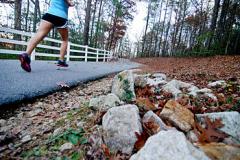
Founded in Wade in 1758, Old Bluff Presbyterian Church is one of the oldest churches in the Upper Cape Fear Valley. The fourth Sunday of September each year is the annual Old Bluff Reunion; it is open to the public. Bluff Presbyterian Church maintains a detailed history at their website.
Since then, hundreds of houses of worship have been established in and around Cumberland County, including Catholic, Baptist, Pentecostal, Methodist and Presbyterian churches, which have the largest congregations. Fayetteville is home to St. Patrick Church, the oldest Catholic parish in the state.
 Saint-Avold, France
Saint-Avold, France
Word Count: 4025






